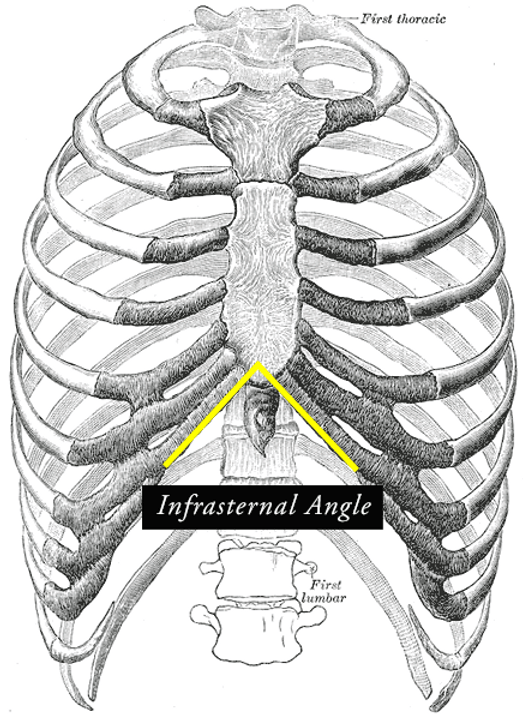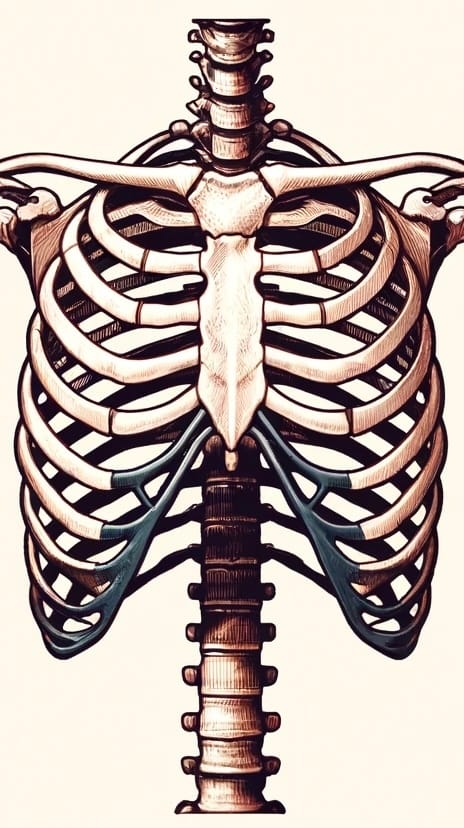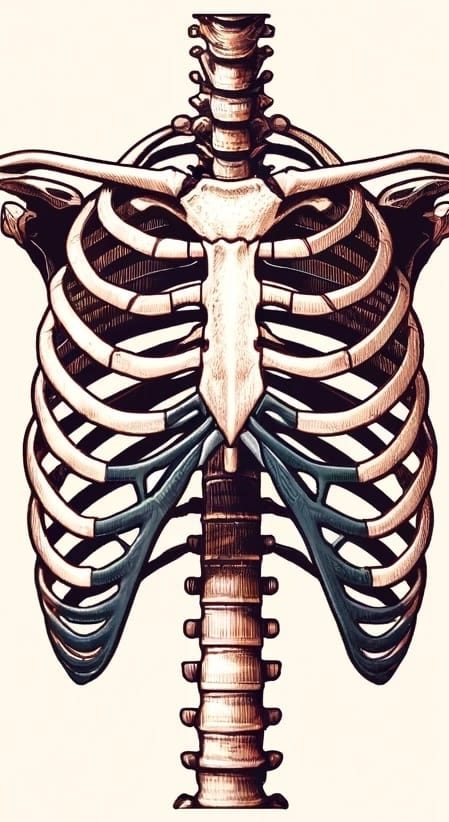- PBR Insights
- Posts
- Integrating Infra-Sternal Angleo Analysis for Shoulder Health and Performance
Integrating Infra-Sternal Angleo Analysis for Shoulder Health and Performance
The Athlete’s Archetype in Shoulder Evaluation
The Challenge of Shoulder Rehabilitation in Athletes
Rehabilitating shoulder injuries to restore performance is a significant challenge in both overhead and contact sports. Athletes participating in overhead sports, like baseball, are particularly susceptible to these injuries. Notably, a substantial percentage of baseball injuries occur in the upper extremity. This trend is also evident in youth sports; a large study of young baseball players revealed a high incidence of arm injuries. As these athletes progress, especially beyond high school, the incidence of shoulder and elbow injuries remains similar, but the risk of requiring surgery increases. The frequent occurrence and the extensive care needed for shoulder injuries in young baseball players are concerning. While this article primarily focuses on professional athletes, it’s important to note that the range of risk factors extends beyond the scope discussed here.
The inherent complexity of shoulder injuries stems from the joint’s natural mobility. Achieving optimal health for the shoulder requires a fine balance between stability and strength. Activities involving extreme range of motion, particularly at high velocities, are likely to stress these factors. For instance, a tennis player executing a serve or a baseball pitcher throwing a fastball involves rapid shoulder rotation, significantly straining the joint and increasing the risk of injury.
Through this article, I aim to share my insights into the nuances of shoulder assessment and rehabilitation, drawing attention to the unique challenges and solutions in this field of sports medicine.
Table of Contents
Understanding Athlete-Specific Shoulder Dynamics
In my practice, encountering patients who have not made progress despite multiple consultations and various treatments is not uncommon. We’ve all seen these athletes; despite having consulted multiple specialists, they achieve minimal results. In my opinion, the key to breakthroughs in rehabilitation often lies in a comprehensive understanding of the athlete’s physical attributes and training regimen, coupled with an insight into the mechanisms of injury. This approach offers a holistic view of the shoulder’s condition, essential for conducting detailed assessments.
Moreover, discerning the nature of the injury is a critical step. Injuries in athletes can be broadly classified as traction-related, more common in overhead sports, or compression-related, as typically seen in combat sports. Understanding this distinction is fundamental in tailoring the assessments. Such tailored evaluations are instrumental in developing effective rehabilitation strategies that facilitate a successful and sustainable return to sport.
Comprehensive Assessment Tools: Local and Global Perspectives
When selecting assessment tools for a comprehensive evaluation of an athlete’s condition, it is crucial to include both local and global assessments. These assessments play a pivotal role in understanding the athlete’s specific needs and are critical for developing an effective rehabilitation plan. Choosing appropriate tests for local measurements is critical. Endurance testing, focusing on specific muscle groups, is as important as assessing absolute strength. Moreover, evaluating symmetrical endurance and assessing responses to different positions are integral components. Close kinetic chain testing, especially for athletes engaging in ground-based sports, aids in gauging both local and global strength and endurance. To facilitate this, I introduced the SMART Shoulder Assessment. This streamlined framework is designed specifically for a thorough evaluation of shoulder-related issues in athletes. The acronym SMART represents the key components essential in assessing and addressing shoulder injuries and mobility concerns:
• S: Shoulder Mobility
• M: Mobility of Thoracic Spine
• A: Analysis of Scapular Movement
• R: Rib Mechanics and Athlete Archetype
• T: Testing (Dynamic strength testing and tailored force assessments)
This is just a simple mnemonic to ensure you cover the essential aspects of shoulder testing at a minimum.

Gif by GEICO on Giphy
Check out my recent post on criteria for return to sport (RTS) for overhead athletes 👇
The Athlete’s Archetype in Shoulder Evaluation
Understanding shoulder range of motion requires meticulous attention to detail. A thorough assessment should consider the capsule’s influence on shoulder movement, particularly in adapting to sport-specific demands. For instance, when evaluating a tennis player's shoulder, it is essential to recognize that the serve requires a blend of internal and external rotation. Assessing both classical and accessory motions enables the identification of any limitations or asymmetries that may impact serve performance. Comparing movement patterns with those of the contralateral side facilitates the customization of interventions aimed at preserving athlete health.
Understanding the Infra-sternal Angle

The Inferior Sternal Angle (ISA) plays a pivotal role in shoulder mechanics as it significantly influences breathing patterns and rib movement, which are integral components of shoulder mechanics. It also affects postural tendencies that are closely related to shoulder movement. In the context of athletic performance and rehabilitation, the ISA serves as a crucial assessment tool. It aids in creating rehabilitation strategies that are specifically tailored to an athlete's individual needs. This tailored approach often includes focusing on areas such as breathing retraining, restoring rotational capabilities, and enhancing thoracic mobility. Individuals characterized by a Wide ISA typically exhibit anterior/posterior rib cage compression, which leads to reduced rotational capabilities. Moreover, the position of the scapula in individuals with a Wide ISA differs significantly from those with a Narrow ISA and viceversa.

Athletes with a Wide ISA tend to have anterior/posterior rib cage compression, leading to reduced rotational capabilities. Usually this angle is >100º.

Conversely, those with a Narrow ISA typically experience medial/lateral rib cage compression, resulting in greater rotational capabilities. Usually this angle is < 90º.
Integrating Research and Clinical Experience for Optimal Rehabilitation
Taking into account an athlete’s archetype, which includes body structure, posture, and movement patterns, introduces an additional dimension to shoulder evaluation. The key lies in integrating research-backed methods with clinical experience. Although research provides valuable insights, clinical expertise, especially gained from high-performance sports environments, is vital for refining assessments and developing interventions. This is partly because these athletes often already adhere to best practices. Therefore, innovative thinking is frequently required to provide genuine solutions. Drawing on experience to think about and develop systems like these has proven beneficial. It’s not a panacea, but it is a viable solution that can be proposed at times for high-perfomance athletes.
Take-Home Points
Shoulder injuries are common in athletes, particularly those in overhead sports like baseball, and often require extensive care. The risk of these injuries continues into youth sports and increases with the athlete's age.
Complexity of Shoulder Mechanics: The shoulder's natural mobility necessitates a delicate balance of stability and strength, making rehabilitation challenging. High-velocity motions, such as a tennis serve, put the shoulder at significant risk of injury.
Holistic Athlete Assessment: Effective rehabilitation is rooted in a comprehensive understanding of an athlete's physical attributes, training regimen, and injury mechanisms.



